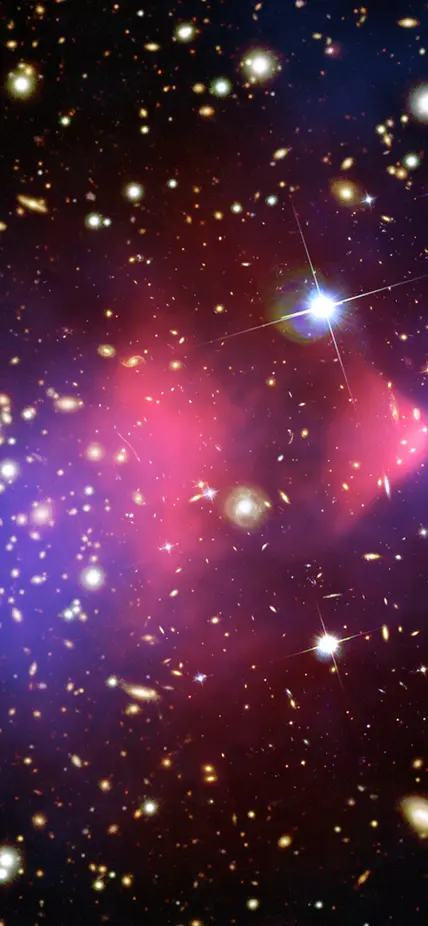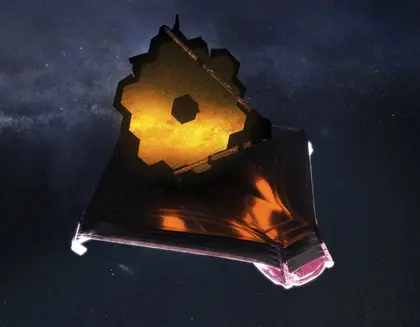
Carnegie Science astronomers continue to showcase their creativity and propensity for bold research ideas using JWST. Three Carnegie-led teams were selected for the space telescope’s third cycle of time allocations, adding to the 10 initiatives headed up by Carnegie-affiliated researchers in the first two rounds.
“JWST is an incredible new tool that is revealing never-before-seen details about the cosmos,” said Carnegie Science Observatories Director John Mulchaey. “And Carnegie has been a part of its story since the 1990s when Alan Dressler chaired the committee that first conceived of its capabilities.”
Probing Galaxies
Staff Scientist Andrew Newman and recently departed postdoc Meng Gu—who just started a new position at the University of Hong Kong—will deploy the powerful space telescope to study the history of starbirth in four giant galaxies from the early universe that grew very quickly for 1 to 2 billion years and then suddenly stopped.
“To me, personally, what is most interesting about this project is that we will finally have a detailed view on the star formation histories and chemistry of quiescent galaxies when their star formation just stopped,” Gu said. “We will test and verify many interesting scenarios of the quenching process and the life stories of massive galaxies.”
The ejection of gas from these galaxies—potentially accelerated by enormous black holes at their centers—could be the key to understanding why star formation ended. If Newman and Gu are able to map this gas and measure the masses of these black holes, it could provide a major breakthrough in understanding how galaxies evolve.
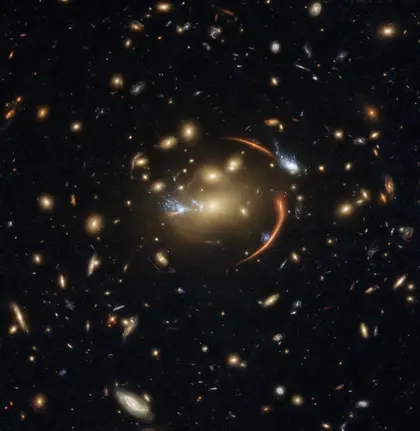
"The particular galaxies that we will observe with JWST are also special because they are gravitationally lensed," added Newman. "They're located behind clusters of galaxies whose gravity causes our targets to appear about five times bigger and brighter. Examples of distant non-star-forming galaxies that are gravitationally lensed are extremely rare."
Jorge Gonzalez, a former postdoc at Carnegie Science’s Las Campanas Observatory in Chile who this month started a faculty position at Pontificia Universidad Católica de Chile is also the lead researcher on a project studying star formation in massive galaxies, joined by Las Campanas Director Leopoldo Infante as a co-investigator.
Gonzalez’s work aims to understand the origins of highly charged carbon gas in the halos surrounding eight distant galaxies, which were previously detected by the Atacama Large Millimeter/submillimeter Array of radio antennae. These carefully selected targets could reveal new details about the interplay between a galaxy’s star-forming activity and its gaseous surroundings.
“The study of primitive galaxies is a priority in astrophysics,” explained Infante. “The goal of Gonzalez's work is to understand their formation and evolution at the time in the universe when everything was assembled. Combining data from ground-based telescopes, such as ALMA and the Magellans at Las Campanas, with JWST is critical to this study”
Revealing Exoplanets
On the exoplanetary side of things, Staff Scientist Johanna Teske and Postdoc Nicole Wallack were selected for an archival project that is seeking to account for and eliminate sources of “noise” in observations of small exoplanet atmospheres that could be caused by JWST’s suite of highly engineered instruments.
They based their latest proposal on Wallack’s work with the data from their first round of JWST observations, which really pushed the space telescope’s capabilities to their limits.
"We're finding that there's just a lot of what's called 'residual correlated noise,' noise that's not behaving like we'd expect from white noise and that just means that we're not accounting for something properly and that's hindering our ability to understand these atmospheres," Wallack said.
In cases like theirs—looking for the signals from small planets—it’s absolutely crucial to glean every drop of information from the data to confidently answer questions about which small planets have atmospheres, and what are their compositions. Wallack worked very hard to accomplish this with the observations in their previous JWST program, but now, after the first two cycles of JWST, there will be almost 30 such small planet atmosphere datasets taken by the entire community, which will be publicly available for further analysis. Their plan is to conduct a deep dive into all of this information to both potentially improve the precision, as well as look for trends in the "noise" properties in data that could be useful for planning future observations.
“The atmospheres of these small planets, between the size of Earth and Neptune, are really the frontier that wasn't possible to explore much before JWST,” Teske explained. “This is a totally new facility, with new instruments, and new kinks to work out. It took a while for scientists to develop best practices for analyzing and interpreting Hubble Space Telescope data. Now we have to build on those lessons learned and do the same for JWST."
This work represents Teske’s third successful JWST proposal and the second for both Gonzalez and Newman.
More Projects
In addition to the initiatives led by Carnegie Science investigators, many members of the Carnegie community are on research teams led by outside scientists.
For example, galaxy expert Gwen Rudie is part of a project organized by former Carnegie Science postdoc Allison Strom, now at Northwestern University, which is focused on calibrating one of the telescope’s workhorse instruments, called NIRSpec. It will provide open-source software to the entire astronomical community, enabling better interpretation of JWST data.
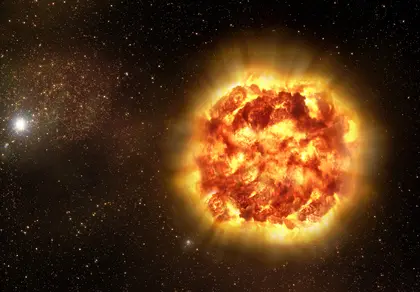
Planet researcher Peter Gao is a co-investigator on three JWST projects. One will focus on a topic of great interest to the formation history of very young sub-Neptunes. These exoplanets are extremely common throughout the Milky Way, but not represented within our own Solar System. Another will study the atmospheres and formation processes of a pulsar planet. Although the first planet discovered beyond our Solar System was a pulsar planet, much about them remains unknown. The third will look for evidence of silicate vapor atmospheres on ultra-hot rocky planets. Theoretical models indicate that this could be possible at extremely high temperatures, but the phenomenon has not been observed in nature.
Carnegie astronomers Chris Burns, Nidia Morrell, and Mark Phillips are members of four JWST projects with two main scientific goals. One of their efforts seeks to understand the possible supernova origins of cosmic dust, an important ingredient in stellar evolution, especially in the early universe. The other is interested in confirming or ruling out different models for how Type Ia supernovae form from the detonations of white dwarf stars. These violent explosions are used by scientists as cosmic distance markers that enable researchers to measure the expansion of the universe.
Several Carnegie Science postdocs are also members of JWST research teams, including Carnegie-Princeton Fellow Grace Telford, who is participating in a project that will image the nearby Sagittarius dwarf irregular galaxy to recover its ancient history of star formation. Likewise, postdoc Stacy Kim is part of an initiative to better constrain dark matter physics by mapping the Bullet Cluster.
Looking Ahead
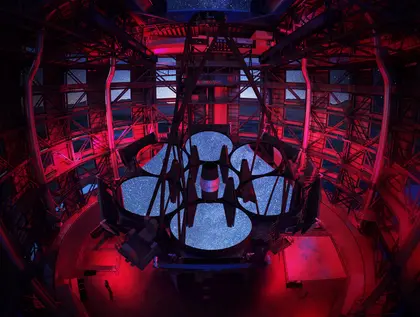
The infrared instruments that are enabling Carnegie Science researchers at every career level to conduct exciting experiments using JWST will be complementary to the instrument suites being developed for the next generation of ground-based telescopes, including the Giant Magellan Telescope, currently under construction at Las Campanas.
“These large ground-based telescopes will be super complementary to things like Webb,” said Mulchaey.
The difference in mirror size between a space-based and ground-based telescope will enable astronomers to use GMT to characterize the first stars and galaxies detected by JWST in greater detail. Likewise, optical capabilities of GMT—as compared to the infrared instruments deployed on JWST—will enhance astronomers’ capacity to detect biosignatures such as oxygen in exoplanet atmospheres.
“This is going to be an exciting combination,” Mulchaey concluded.
